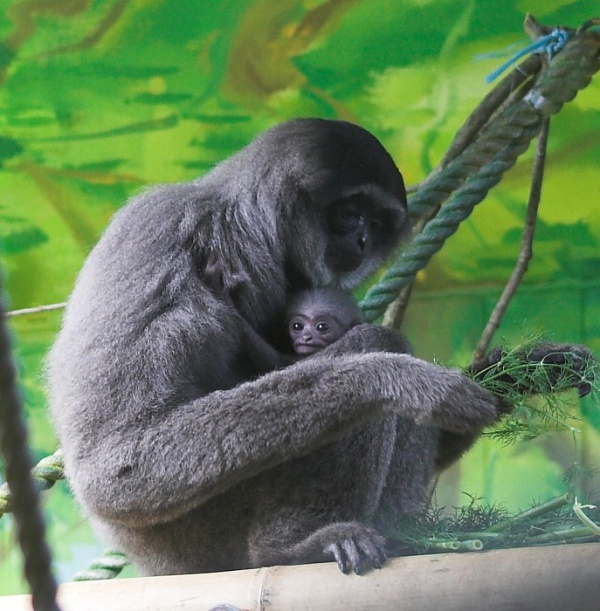Facts About Silvery (Javan, Grey) Gibbon
The silvery gibbon is an enchanting primate from the gibbon family, Hylobatidae, found exclusively on the Indonesian island of Java. These intriguing creatures inhabit the island's pristine rainforests, thriving at elevations up to 2,450 meters above sea level. Regrettably, the silvery gibbon is classified as Endangered on the IUCN Red List, with fewer than 2,500 mature individuals remaining.
With their striking bluish-grey fur and dark caps, silvery gibbons are unmistakable. They lack external tails and possess unique adaptations that make them exceptional arboreal acrobats. Their diet consists of fruits, leaves, and flowers, and they excel at climbing and swinging through the trees, a skill known as brachiation.
Female silvery gibbons give birth to one infant every three years and nurse their young for about 18 months. The young gibbons stay with their families until they reach maturity, which occurs around eight to ten years of age. Unfortunately, their survival is jeopardized by habitat destruction, the illegal pet trade, and the reduction of their natural habitat due to human activities.
Conservation efforts are underway, including breeding programs in zoos and rehabilitation centers for gibbons that were previously held in captivity. Silvery gibbons typically live in pairs and are known to defend their territories with loud calls and, at times, aggressive behavior.
There are two recognized subspecies of the silvery gibbon: the Western silvery gibbon and the Eastern silvery gibbon. However, these subspecies distinctions are not officially acknowledged by the IUCN Red List. Despite ongoing conservation efforts, the future of the silvery gibbon remains uncertain.

 Malaysia
Malaysia